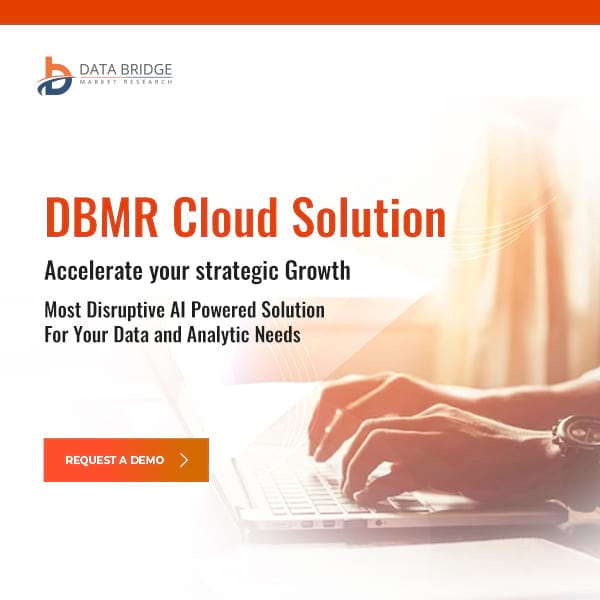Molecular spectroscopy employs electromagnetic radiation interactions with atoms or molecules, assessing qualitative or quantitative properties. Analyzing absorbed, emitted, or scattered waves gauges molecular responses across diverse frequencies and energies. Industries such as biotechnology and pharmaceuticals leverage this technique, driving a surge in market demand for molecular spectroscopy. The method's ability to unveil molecular intricacies underscores its significance in advancing research and applications across sectors, further solidifying its pivotal role in scientific exploration and industrial processes.
Data Bridge Market Research analyses that the Global Molecular Spectroscopy Market, which was USD 7,221.29 million in 2022, is expected to reach USD 12,688.57 million by 2030 and is expected to undergo a CAGR of 7.3% during the forecast period 2023-2030.
"Increasing application of molecular spectroscopy in environment screening drive the market growth"
The expanding use of molecular spectroscopy in environmental screening is a crucial catalyst for the market's growth. Intensifying regulations stem from escalating pollution and the depletion of natural resources, compelling the need for stringent monitoring. Molecular spectroscopy emerges as a vital tool, enabling precise analysis of pollutants. Its application aids in compliance with environmental standards and underscores its pivotal role in safeguarding ecosystems, aligning with global efforts to address environmental challenges effectively.
What restraints the growth of the global molecular spectroscopy market?
" High cost associated molecular spectroscopy system hamper the market growth"
The elevated costs linked to molecular spectroscopy systems significantly hinder market growth from 2023 to 2030. Spectroscopy instruments' inherent advanced features and functions contribute to their higher prices. Beyond the initial purchase expense, aligning the system with industry standards adds substantial costs. This financial barrier limits accessibility for potential users and industries, potentially impeding widespread adoption and hindering the market's overall growth trajectory during the specified forecast period.
Segmentation: Global Molecular Spectroscopy Market
The global molecular spectroscopy market is segmented on the basis of technology and application.
- On the basis technology, the global gypsum board market is segmented into nuclear magnetic resonance spectroscopy, UV-visible spectroscopy, infrared spectroscopy, near-infrared spectroscopy, colour measurement spectroscopy, raman spectroscopy, and other technologies
- On the basis of application, the global gypsum board market is segmented into pharmaceutical applications, food and beverage testing, biotechnology and biopharmaceutical applications, environmental testing, academic research, and other applications
Regional Insights: North America dominates the Global Molecular Spectroscopy Market
North America dominates the global molecular spectroscopy market due to its robust healthcare facilities, a significant presence of major market players, exceptional healthcare infrastructure, and a substantial patient base seeking improved cancer diagnoses. This stronghold positions the region as a key driver in advancing molecular spectroscopy applications and technologies, consolidating its leadership in the global market.
Asia-Pacific will dominate the global molecular spectroscopy market from 2023 to 2030. The region anticipates substantial growth propelled by increased government initiatives promoting healthcare, rising health awareness, and a growing demand for advanced medical technology. The region's large population pool underscores the escalating need for quality healthcare, making it a focal point for significant advancements and expansion in the molecular spectroscopy market.
Recent Developments: Global Molecular Spectroscopy Market
- In January 2021, Agilent Technologies broadened its molecular spectroscopy range by unveiling the Agilent Cary 3500 UV-Vis spectrophotometer. This innovation delivers improved performance and user-friendliness, catering to diverse applications
- In March 2021, Jeol Ltd launched the JMS-T200GC AccuTOF GCx Plus GC-MS system, ensuring high-resolution and high-sensitivity analysis specifically tailored for volatile and semi-volatile compounds
To know more about the study, visit https://www.databridgemarketresearch.com/reports/global-molecular-spectroscopy-market
The Prominent Key Players Operating in the Global Molecular Spectroscopy Market Include:
- Thermo Fisher Scientific Inc. (U.S.)
- Bruker (U.S.)
- PerkinElmer, Inc. (U.S.)
- Agilent Technologies, Inc. (U.S.)
- Eurofins Scientific (Luxembourg)
- Danaher (U.S.)
- Merck KGaA (Germany)
- Siemens Healthcare GmbH (Germany)
- Medtronic (Ireland)
- ABB (Switzerland)
- B&W Tek. (U.S.)
- Digilab Inc. (U.S.)
- Hamamatsu Photonics K.K. (Japan)
- HORIBA, Ltd. (Japan)
- JASCO International Co., Ltd. (Japan)
- JEOL Ltd. (Japan)
- Endress+Hauser Group Services AG (Switzerland)
- Metrohm India Limited (Switzerland)
- Montana Instruments Corporation (U.S.)
- Coherent, Inc. (U.S.)
- Teledyne Technologies Incorporated (U.S.)
- Renishaw plc. (U.K.)
- Shimadzu Corporation (Japan)
Above are the key players covered in the report, to know about more and exhaustive list of global molecular spectroscopy market companies, contact: https://www.databridgemarketresearch.com/contact
Research Methodology: Global Molecular Spectroscopy Market
Data collection and base year analysis are done using data collection modules with large sample sizes. The market data is analyzed and estimated using market statistical and coherent models. In addition, market share analysis and key trend analysis are the major success factors in the market report. The key research methodology used by DBMR research team is data triangulation which involves data mining, analysis of the impact of data variables on the market, and primary (industry expert) validation. Apart from this, data models include Vendor Positioning Grid, Market Time Line Analysis, Market Overview and Guide, Company Positioning Grid, Company Market Share Analysis, Standards of Measurement, global vs Regional and Vendor Share Analysis. Please request analyst call in case of further inquiry.










